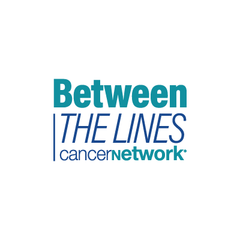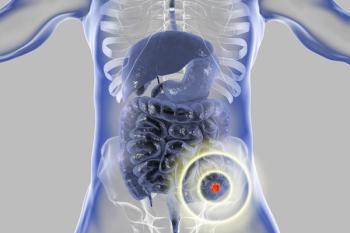
Key GALAXY Takeaways and Clinical Implications
Stacy A. Cohen, MD and Mark Lewis, MD share key takeaways from the GALAXY study and discuss the clinical implications of using ctDNA-based assays for patients with CRC.
Episodes in this series

Transcript:
Mark Lewis, MD: These are our discussion questions. I want to hear your key takeaways. My biggest takeaway was this: I think this is a strong prognostic marker that matches and arguably might even outperform some of our traditional histopathologic risk stratifiers. You’ve already referred to some of them in passing. I was always taught to think about, of course, T [tumor] stage, nodal involvement, perineural invasion, lymphovascular invasion, obstruction, perforation. These are all the sort of real-world anatomic and clinical reasons that we would decide to offer a patient adjuvant chemotherapy. And it’s fascinating, some of the head-to-head multivariate analyses that [Masahito] Kotaka [MD, PhD,] showed. This assay, when positive versus negative, the hazard ratios were easily at or above the hazard ratios for some of these other clinicopathological variables that we’ve accepted as good reason to give somebody adjuvant chemotherapy, sometimes for up to 6 months. So I think that part, the prognostication part, is fascinating. I really am not convinced that we’re quite yet there in terms of this person gets chemotherapy and this person doesn’t. Sort of a devil’s advocate example would be someone who has stage III disease, but a negative postoperative 4-week time point; are we really convinced yet that it’s safe not to give him chemotherapy? And again, I think that’s where we’re going to need some of these coming trials, we’ll get into in a minute what those are, to answer that question in a randomized fashion.
Stacey A. Cohen, MD: There was a very recent JAMA Oncology article, which was a single-institution study. They were comparing evaluation of this same circulating tumor DNA [ctDNA] assay compared to standard CEA [carcinoembryonic antigen] and imaging for surveillance, and looking at which caught it first, which was the best test. And ctDNA was not the winner here. In fact they felt that there were a lot of good data still to say CEA and imaging is the best way to do surveillance. But they did report out patient-level data, and it was interesting because sometimes ctDNA was first, sometimes CEA was first, and sometimes imaging was first, which makes me think that maybe these things were being drawn at different time points, and how it’s OK if you’re the second test if you’re being followed 2 weeks later, it’s not OK if it’s 6 months later. I always say to my patients that we stand on 3 legs in surveillance: symptoms, blood work, and imaging. To me we just have another leg, and that adds to our ability to more faithfully decide, do we think this patient is likely to recur? Do we think that they’re less likely to recur? But I’m with you. I’m not ready to take away potentially curative-intent adjuvant therapy on our best prognostic patient. I might quickly deescalate if they’re having symptoms, but I am very hesitant to take someone who has good-risk disease and take away something that historically has been the thing that we think adds to that benefit.
Mark Lewis, MD: Beautifully said. I know earlier I came across as perhaps a cockeyed optimist. I’ll point out there was also one tiny, terrifying detail out of the GALAXY study that we haven’t mentioned yet, which is that they were seeing positive ctDNA signals and even recurrences in the stage I and the low-risk stage II population. So I think what we’ve known for a long time is our histopathologic criteria and using them to select people for adjuvant therapy is an imperfect science, but it has, to date, been the best that we’ve had to offer. You said it just now. We hate to miss the opportunity to cure people, and the word cure itself is a loaded one. I think what you and I are both meaning is durable, disease-free intervals ideally of 5 years or longer.
I think GALAXY is the first massive observational study telling us that ctDNA is here, and that we really need to learn how to use it in our practices. Do you think that’s fair?
Stacey A. Cohen, MD: I do. I think that there’ve been a lot of people who have been very skeptical or doubtful. My hope is the biggest takeaway from GALAXY is that people can be believers that this could be a technology that is useful and additive to our practice. How directive is going to depend on those studies that you mentioned and the more that are to come from this. But I think that this is an incredible technology, and I think sometimes it just takes a thousand patients to help everyone understand maybe what role this can have in modern oncology solid-tumor practice. We’re just really, as you said, catching up to our liquid [tumor] colleagues who have been doing this for a long time.
Mark Lewis, MD: Yes, exactly right. I’m exclusively a GI [gastrointestinal] oncologist this point. I used to have a practice that included hematology, and to be honest, I’ve kind of missed MRD [minimal residual disease] assays because I was using them all the time in the liquid setting, and I haven’t had them in solid tumors. I know there’s a final prompt here about how is this, not necessarily affecting our practice in real time, but what do our practices already look like? I have to admit there’s a tremendous amount of selection bias here, for me at least. I never see stage I [patients], I seldom see low-risk stage II, because my surgeons are incredibly savvy and they know staging. They know the patients who are likely to get chemotherapy from me. Even a high-risk stage II can be a very nuanced discussion on the back of the QUASAR data we mentioned earlier. So everything I’m seeing essentially is either the adjuvant setting for stage III, or it’s people who are already unfortunately clearly metastatic. That should be stated. I see literally dozens of patients like that every year.
One thing I will say is in the instances that used a tumor-informed assay, and to your point, ones not just qualitative, or yes/no there’s disease, but quantitative and giving us mean tumor molecules/mL. I’ve seen it do 2 things. No. 1, it’s actually been, I hate to sound exploitative, but useful to convince a patient who’s otherwise on the fence about adjuvant chemotherapy that if they have a positive postoperative signal, it has persuaded some of my patients to then undergo adjuvant chemotherapy. And the other thing I’ve noticed is that if you have someone who goes in that scenario from positive to negative, it is a way of demonstrating to them in close to real time that the chemotherapy is working. On the other hand, the part I have a hard time with is there have been several instances in my practice where someone has had a positive MRD signal, but to your point, nothing visible in any other way. No symptoms, no other aberrant blood work, and nothing on a scan.
I loved your sort of tripod of those 3 things, and we’re now adding a leg. I don’t think this assay completely obviates the need for those 3 pillars. It’s also psychologically, if I’m honest, quite difficult to cancel a patient when they have the positive MRD signal but none of the other 3 areas that you mentioned being aberrant. In the scans in particular, the lag time between a positive MRD signal and something visible on scan, depending on imaging modality, can be vast. In some of the [Thomas] Reinert, [PhD,] data, it was not just months, it was even into years. I find that the uncertainty that has introduced to patients is still quite difficult to navigate because this is such early technology. But on the whole, I agree with you. I think GALAXY is converting many of our colleagues to believers that this at least adds to our existing clinicopathologic criteria.
Stacey A. Cohen, MD: I’ve had the same experience. I have had a couple of patients who are clear false negatives with this assay, where they clearly had metastases that were identified radiographically. They were getting imaging for other reasons, and their same-day blood draw for their ctDNA came back negative, while they had a clear metastasis that was even resected and shown to be positive. So we know that a negative does not guarantee disease-free. It just increases your confidence in some of the actions you might’ve been taking anyway. And like you, I’ve had a couple of patients who are positive, where despite extensive imaging every 3 months, we have yet to come up with a location for where their cancer is. There I think the quantitative level is helpful because if it’s rising, of course, that is more meaningful in some ways. But it then begs the question of how do we feel about treating based on what might be biochemical recurrence alone as opposed to our very traditional tried-and-true radiographic recurrence? Does that mean we can open up the gates for drugs like irinotecan and cetuximab that we typically reserve only for metastatic disease? Does that apply to micrometastatic disease? And so with any new technology, once you really get into it, there are so many different nuances that we have to identify. I do think it takes a bit to get used to this technology, but I think it’s very interesting. As you said, on the whole, I think this helps move patient care forward.
Transcript edited for clarity.
Newsletter
Stay up to date on recent advances in the multidisciplinary approach to cancer.























































































